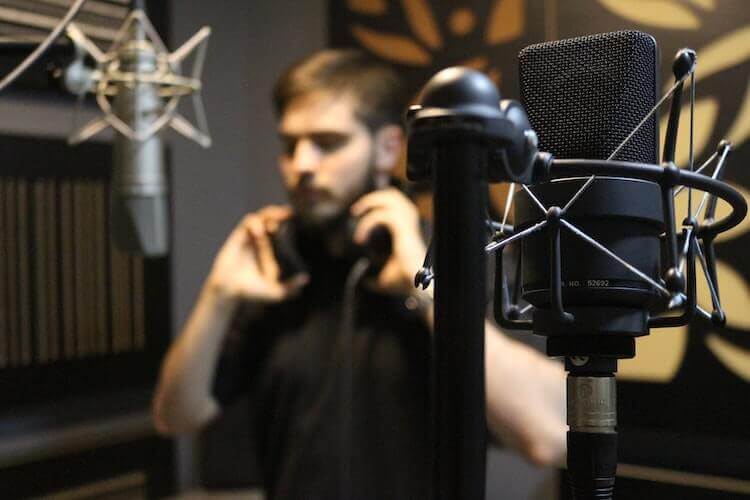If you’ve ever told anyone you wanted to be a recording artist, you will have found depressing statistics and projections of low-income. The truth is, it is difficult to see big success in the music industry. This guide for how to become a recording artist can be helpful to opt for it.
But there are tons of people that do record music and make money so there is no reason why you can’t too. And if you don’t want to be a recording artist full time, it can be a lucrative side hustle or fulfilling pastime.
Becoming a recording artist is different from being in an orchestra or working in another part of the music industry. You need to have a specific set of skills and knowledge.

How to Become a Recording Artist in Eight Simple Steps
This step-by-step guide will break down exactly what you need to know to make it.
Step 1: Develop Your Musical Skills
This is an obvious step, but having stellar musical skills is without a doubt the most important thing you need to become a recording artist. Many wannabe musicians reach a certain level and think their personality will make up for their lack of skill. But as a recording artist, this won’t be enough.
So, choose your weapons (i.e. instruments or voice) and practice for several hours a day so that you are one of the best in your field. Invest in a mentor or teacher and get qualifications if you think they will set you apart.
Learning how to read note music (and tablature if relevant) will also help you land more jobs. Remember, being a recording artist is to fulfill your musical dreams, not to be famous. Session musicians and backing singers are recording artists, too.
Step 2: Develop Your Musical Style
Developing your musical style goes hand-in-hand with developing your musical skill. While you practice, you will likely find yourself drawn to some styles over others.
Mastering a couple of complementary styles (like Jazz and Blues, for example) is better than practicing a smattering of styles. It’s far easier to make a name for yourself in one genre.
Step 3: Develop Your Musical Taste
Again, the music you listen to will likely be music you like to play. But it’s important that you have an encyclopedic knowledge of modern music in your chosen genre. You need to know what is popular and what sells at the moment.
Record studio owners and other musicians will expect you to have a keen interest in staying up to date with music. Tech companies expect their employees to know the latest digital trends and it’s the same in the music industry.
For example, if you are a country music performer, you will not get away with only listening to Garth Brooks, Loretta Lynn, and Hank Williams. You need to be listening to Cody Johnson, Carly Pierce, and Lady A, too.
Step 4: Make Music Friends and Perform Live
Even if you prefer performing in a recording studio over a stage, live music venues are how you will get hiring managers to notice you. It’s also a good environment to make industry contacts and musical friends.
Play any venue you can. Start with any local bar or club and then contact festivals and move to bigger cities. The more people you know and can see you play, the better for your recording artist career.
Be friendly and accommodating at all times as no one wants to work with a diva.
Step 5: Buy Tech and Make Records at Home
Back in the good ol’ days of rock ‘n’ roll, you would beg, steal, or borrow your way into a rundown record studio to cut a demo. But that’s not how the music recording industry works nowadays.
Now, people save money from a part-time bartending job and buy professional home recording equipment. This will likely include:
- Laptop
- Mixer
- Monitors
- Microphones
- Headphones
- Mic stands and pop filters
- Amps
You also might need blankets and pillows to muffle the sound in the room you record music in. But did you know that your Macbook record audio capabilities are studio-quality tech? So, you may not need as much expensive equipment as you think.
Becoming adept at recording and producing music will also add another proverbial string to your bow.
Step 6: Share Your Music Online
Another development in the music industry in recent years is that you no longer send CDs to A&R people to get them to notice you. Nowadays, they find you.
Share your music online via platforms like Apple Music, Spotify, and Soundcloud. These platforms can help you make money online as a musician.
Step 7: Think About Your Recording Artist Image
And if you are sharing music online, you will need to give your image and “look” as a recording artist some thought.
You will need professional photographs to use as profile images and for marketing purposes. You might also need a logo and a website to list your tour dates and your contact information.
It might also be worth being active on social media sites like Instagram, Facebook, and TikTok. They are great platforms for displaying your musical abilities and another avenue for someone to notice your talent.
Step 8: Find Record Labels and Send Your Stuff
The only way you will become a recording artist, other than DIYing it, is for a record company to hire you. You can post on social media and music streaming sites in the hopes that they will notice you, but it’s also a good idea to be proactive and contact them first.
Contact independent and commercial record labels that sign acts within your niche. Send them a short and sweet email with your headshot, links to your music, and other relevant details.
But don’t take no for an answer until you get a meeting. Send a package to their office with some treats as well as your music. Be daring and they are more likely to get in touch.
Summing up How to Become a Recording Artist
The steps to being a successful recording artist might be simple in theory, but they are not easy in practice. You need to work hard and be the best of the best for anyone of importance to notice you.
But as they say, the cream always rises to the top. Now you know how to become a recording artist and have a rewarding career in music, all you need is to take action.








